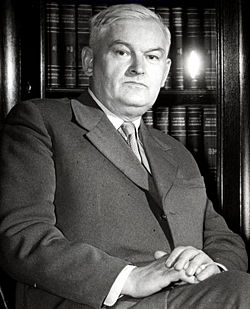
Boleslaw Szabelski
Encyclopedia

Poland
Poland , officially the Republic of Poland , is a country in Central Europe bordered by Germany to the west; the Czech Republic and Slovakia to the south; Ukraine, Belarus and Lithuania to the east; and the Baltic Sea and Kaliningrad Oblast, a Russian exclave, to the north...
composer of modern
Modernism
Modernism, in its broadest definition, is modern thought, character, or practice. More specifically, the term describes the modernist movement, its set of cultural tendencies and array of associated cultural movements, originally arising from wide-scale and far-reaching changes to Western society...
classical music. While his style shifted and varied over the course of his life, he is best known for his atonal
Atonality
Atonality in its broadest sense describes music that lacks a tonal center, or key. Atonality in this sense usually describes compositions written from about 1908 to the present day where a hierarchy of pitches focusing on a single, central tone is not used, and the notes of the chromatic scale...
work composed during the 1950s and 1960s.
Szabelski studied at Polish Musical Society School with Łysakowski in 1915. He attended the Warsaw Conservatory under Karol Szymanowski
Karol Szymanowski
Karol Maciej Szymanowski was a Polish composer and pianist.-Life:Szymanowski was born into a wealthy land-owning Polish gentry family in Tymoszówka, then in the Russian Empire, now in Cherkasy Oblast, Ukraine. He studied music privately with his father before going to Gustav Neuhaus'...
. Between 1929 and 1939, he taught organ and composition at the conservatoire of Katowice
University of Music in Katowice
University of Music in Katowice is one of the leading musical schools in Poland. It is located in Katowice, Silesia...
.
Szabelski began working in the neoclassical and romanticism modes typical of the early 20th C. He adopted the serialist
Serialism
In music, serialism is a method or technique of composition that uses a series of values to manipulate different musical elements. Serialism began primarily with Arnold Schoenberg's twelve-tone technique, though his contemporaries were also working to establish serialism as one example of...
technique in the 1950s and was one of a number of Polish new wave of composers to embrace atonality. His early work had been characterised by monumental forms and fanfare motifs and Szabelski adapted to the new astetic while retaining his old signatures. As a result he developed a style described as "strikingly innovative".
He composed five symphonies (1926, 1934, 1951, 1956 and 1968), as well as concertos, chamber and choral works. Szabelski was highly influential on the "New Polish School" composers of the early 1950s, and had a formative influence on his student Henryk Mikołaj Górecki.
Works
| Selected works | ||
|---|---|---|
| Year of completion | Composition | Instrumentation |
| 1926 | Symphony I | Orchestra |
| 1934 | Symphony II | Orchestra |
| 1938 | Toccata | Orchestra |
| 1946 | Sinfonietta | Orchestra, Percussion |
| 1951 | Symphony III | Orchestra |
| 1956 | Symphony IV | Orchestra |
| 1962 | Aforyzmy "9" | Nine instruments |
| 1964 | Koncert | Orchestra |
| 1968 | Symphony V | Choir, organ, and Orchestra |
| 1976 | Mikołaj Kopernik | Solo Soprano, Choir, and Orchestra |
| 1976 | Kantata Reduta | Choir and Orchestra |
Honours and awards
- 1959 - Commander's Cross of the Order of Polonia Restituta
- 1961, 1967 - Award of the Association of Polish Composers
- 1972 - 1000 Anniversary Medal of the Polish State
- 1976 - Commander's Cross with Star of the Order of Polonia Restituta
- Order of the Banner of WorkOrder of the Banner of WorkThe Order of the Banner of Work was a governmental award in Poland during the twentieth-century era of the communist People's Republic of Poland....
Class I
and many state awards and prizes
Sources
- Rappoport-Gelfand, Lidia. Musical life in Poland: the postwar years, 1945-1977. &B Arts International, 1991. ISBN 2-8812-4319-3

